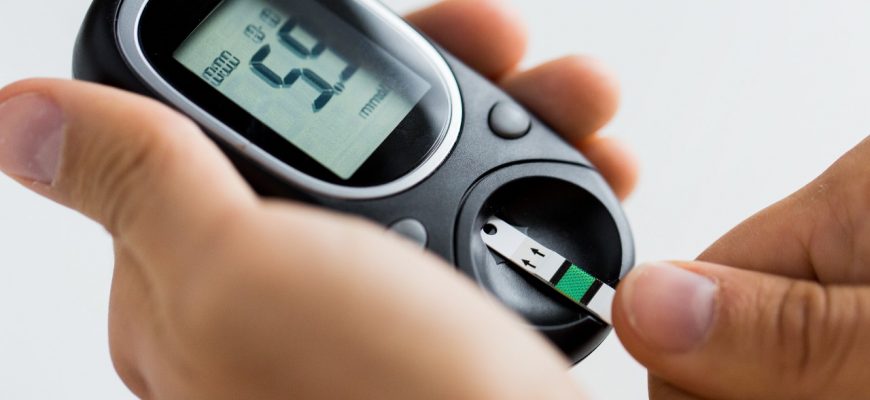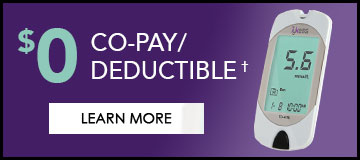
I. Introduction
In today’s healthcare landscape, managing diabetes is more than a routine—it’s a meticulous art balanced on the edge of technological innovation and personal discipline. Blood glucose monitors are at the heart of this management, serving not only as tools but as lifelines for millions. As we explore the realm of glucose monitoring, it’s crucial to delve into not only the basic utility but also the nuances that dictate their effectiveness.
Historically, glucose monitoring has transitioned from rudimentary urine tests to sophisticated digital readings that provide real-time feedback on blood sugar levels. This evolution reflects a broader shift towards personalized medicine, where the emphasis is on tailoring healthcare to individual needs. However, while the technological strides are impressive, the conversation around these devices often skims the surface, focusing primarily on functionality and user-friendliness. Less discussed, but equally important, are the layers of complexity that determine how these devices integrate into the fabric of everyday life for diabetics.
One seldom-explored aspect is the psychological impact of device accuracy on users. Accurate readings can be a source of comfort and confidence, significantly influencing patient compliance and overall attitude towards diabetes management. Conversely, inconsistent or inaccurate data can lead to frustration, anxiety, and a distrust of not only the device but the broader medical recommendations based on its readings.
Moreover, the impact of environmental factors on device performance is a topic that requires more spotlight. Factors such as humidity, altitude, and temperature can affect the accuracy of glucose readings, yet these conditions are often overlooked in general discussions about glucose monitor performance. Understanding these influences is essential for developing more robust devices that can deliver reliable performance across diverse environmental settings.
In delving into the accuracy and worth of glucose monitors, this article will uncover these under-discussed facets, providing a fuller picture of what it means to rely on these devices. By examining both the seen and unseen elements that influence their performance, we can appreciate not just their technological achievements but also their role in the nuanced ballet of managing life with diabetes.
II. Understanding Glucose Monitor Accuracy
What Does Accuracy Mean in Glucose Monitoring?
In the context of blood glucose monitoring, accuracy isn’t just a metric—it’s the cornerstone of effective diabetes management. Accurate glucose monitors provide data that can be the difference between stability and emergency, guiding critical decisions about diet, exercise, and insulin administration. But what does “accuracy” really mean in this context? Technically, it refers to how closely a monitor’s readings match the true glucose levels in the blood, typically validated against laboratory standards.
However, the nuances of accuracy extend beyond simple numerical correspondence. It also involves consistency (how similar repeated measurements are under similar conditions) and reliability across various physiological ranges. These aspects are rarely discussed comprehensively but are vital for understanding how different monitors perform under real-world conditions.
Factors Affecting the Accuracy of Glucose Monitors
Several factors influence the accuracy of a glucose monitor, some of which are rarely highlighted in typical discussions:
- Biological Variations: Users’ blood composition can fluctuate based on diet, hydration levels, and underlying health conditions, potentially affecting the glucose concentration and, consequently, the monitor’s readings.
- Interference from Other Substances: Certain medications or the presence of other substances like vitamin C or uric acid in the blood can interfere with the chemical reaction used by glucose monitors to measure sugar levels.
- Manufacturing Variabilities: Even within the same brand, slight differences in sensor batches or manufacturing processes can lead to variability in accuracy.
An in-depth understanding of these factors is essential not only for choosing the right monitor but also for knowing how to use them effectively under varying personal and environmental conditions. This deeper knowledge empowers users to interpret their glucose readings more accurately, fostering a proactive rather than reactive approach to diabetes management.
By exploring these often overlooked dimensions of glucose monitor accuracy, users can gain a fuller appreciation of the technological intricacies and biological interplay at work, ensuring that they are better equipped to manage their condition effectively and confidently.
III. The Real-World Impact of Glucose Monitor Accuracy
How Accuracy Impacts Diabetes Management
The real-world implications of glucose monitor accuracy extend far beyond the numbers displayed on a screen. Accuracy affects every aspect of diabetes management, shaping decisions that influence both short-term well-being and long-term health outcomes. Accurate glucose data helps ensure effective insulin dosing, dietary adjustments, and exercise planning, crucial for preventing both hyperglycemia and hypoglycemia—conditions that can lead to severe complications if not managed properly.
However, an often overlooked facet of this discussion is the cumulative effect of small inaccuracies over time. Even minor deviations in glucose readings can lead to decisions that subtly skew a person’s management strategy off course, potentially compounding into significant health issues like deteriorating blood vessel health or nerve damage. Understanding the ripple effects of accuracy not only highlights the importance of choosing reliable monitors but also underscores the need for regular calibration and maintenance of these devices.
Case Studies and User Testimonials
Exploring personal stories and case studies provides a unique lens through which the impact of glucose monitor accuracy can be viewed. These narratives bring to life the abstract concepts of accuracy and reliability, illustrating how they play out in everyday scenarios:
- Case Study: Long-Term Complications Due to Inaccurate Readings
- A detailed examination of a patient who experienced progressively worsening symptoms due to consistent underestimation of blood glucose levels, highlighting the dangers of cumulative inaccuracies.
- User Testimonial: Life with a Reliable Monitor
- A first-hand account from a user who switched to a more accurate glucose monitor and saw significant improvements in their lifestyle and health management, emphasizing the positive changes that can come from dependable technology.
These stories not only make the statistics and technical details more relatable but also provide practical insights into the tangible benefits of accuracy in glucose monitoring. By sharing these experiences, we can foster a deeper understanding among patients about the critical importance of investing in quality care tools and adhering to their use as part of a comprehensive diabetes management plan.
IV. Evaluating the Cost-Effectiveness of Glucose Monitors
The Cost of Diabetes Management
Managing diabetes effectively involves not just medical expenses but also considerable personal and societal costs. The financial burden of diabetes care typically includes ongoing costs for medication, glucose monitoring supplies, and healthcare services to manage or prevent complications. However, a less discussed but significant aspect of diabetes management costs is the economic impact of reduced productivity due to health issues and hospital visits.
The real cost of diabetes, therefore, isn’t just in the immediate expenses but also in the long-term financial implications for individuals and healthcare systems. Effective glucose monitoring can dramatically reduce these costs by helping to prevent costly complications and hospitalizations. This underscores the importance of not only selecting accurate monitors but also considering their role in comprehensive diabetes management.
Cost Comparison: Traditional vs. Modern Glucose Monitors
Traditional glucose monitoring systems, while initially less expensive, often require frequent calibration, specific test strips, and potentially higher long-term costs due to the need for more frequent testing due to lower accuracy. Modern monitors like those with no-coding technology, which Tykess provides, represent a higher initial investment but offer greater convenience and potentially lower long-term costs due to better accuracy and reliability.
- Traditional Monitors:
- Regular purchase of specific supplies and accessories.
- Possible frequent doctor visits due to less reliable data affecting diabetes management.
- Modern No-Coding Monitors:
- Higher initial cost but reduced spending on accessories and fewer required calibrations.
- More reliable data can lead to fewer complications and less frequent medical consultations.
The transition to modern glucose monitors can be seen as a cost-effective option when considering their impact on the overall management of diabetes. This analysis not only helps in understanding the direct costs but also in appreciating the broader economic benefits of investing in advanced technology for diabetes care. By highlighting the long-term savings and health benefits, this section aims to provide a comprehensive perspective on the economic implications of choosing a modern glucose monitoring system.
V. The Value Proposition of Modern Glucose Monitors
Benefits of No-Coding Glucose Monitors
The advent of no-coding glucose monitors marks a significant milestone in the evolution of diabetes care technology. Unlike traditional monitors that require manual coding with each new batch of test strips, no-coding devices eliminate this step, reducing the risk of errors due to incorrect coding and simplifying the monitoring process. This advancement is particularly beneficial for individuals who may struggle with the fine details required in managing diabetes, such as the elderly or those with visual impairments.
Moreover, the precision of no-coding monitors offers a rarely discussed benefit: enhanced psychological comfort. Knowing that the device automatically adjusts to each test strip batch provides users with a sense of reliability and trust in their daily diabetes management routines. This psychological comfort can lead to better adherence to testing schedules and, by extension, more consistent blood glucose control.
Perks of Using Tykess: Beyond the Monitor
While the technical specifications and operational ease of the Tykess glucose monitor are clear, the additional benefits that come with using Tykess create an even more compelling value proposition. These benefits, often overshadowed in discussions focused purely on device functionality, include:
- Free Diabetic Supplies: Tykess offers free diabetic socks with each monitor purchase. This not only adds value but also addresses a common complication of diabetes—foot problems—by encouraging proper foot care.
- Esso Gift Card and Free Shipping: Each purchase comes with a $25 Esso gift card and free shipping across Canada, enhancing the overall customer experience and providing tangible additional value.
- Online Management Tools: Access to online tools for managing diabetes helps integrate daily monitoring into a comprehensive care plan. These tools, which allow for tracking trends and receiving tailored advice, turn isolated data points into actionable insights, improving long-term outcomes.
By integrating these perks into the core offering, Tykess not only enhances the practical value of its glucose monitoring system but also addresses broader aspects of lifestyle and diabetes management. This holistic approach to product benefits, focusing on both the psychological and practical aspects of diabetes care, helps position Tykess as a thoughtful leader in a crowded marketplace. This section aims to illustrate how Tykess goes beyond mere compliance with medical needs to genuinely enhancing the quality of life for its users, thus reinforcing the worth of its monitoring system in the eyes of potential users.
VI. Conclusion
As we conclude our exploration into the accuracy and value of glucose monitors, it’s evident that these devices are not just tools but essential companions in the journey of diabetes management. The importance of choosing a reliable and accurate glucose monitor cannot be overstated, as it directly influences the quality of daily life and long-term health outcomes for individuals living with diabetes.
The detailed examination of glucose monitors throughout this discussion has highlighted several less commonly considered yet crucial aspects. The psychological impact of device reliability, the influence of environmental factors on accuracy, and the economic implications of choosing advanced monitoring technology all play pivotal roles in shaping user experiences and outcomes.
In the realm of modern diabetes care, devices like the Tykess no-coding glucose monitor represent more than technological advancements; they embody a commitment to improving user quality of life through thoughtful innovation and comprehensive support. The Tykess system, with its perks such as free diabetic supplies, an Esso gift card, and access to online management tools, goes beyond traditional monitoring by offering a holistic care package that addresses both medical and lifestyle needs.
Furthermore, the value of integrating such advanced devices into daily management routines extends beyond individual benefits. It contributes to broader societal goals of reducing healthcare costs and improving the overall efficiency of diabetes management systems. By ensuring more consistent and accurate data, these monitors help mitigate the risks of complications, thereby lessening the burden on healthcare infrastructures.
This exploration of glucose monitors, particularly through the lens of Tykess’ innovative offerings, invites readers to reconsider what they expect from their medical devices. It’s not just about measuring glucose levels; it’s about enhancing life quality, reducing stress, and providing peace of mind—outcomes that are just as critical as the readings themselves. By choosing wisely, individuals can take control not only of their diabetes but also of their broader health narrative, making informed decisions that lead to a healthier, more fulfilling life.










